The flute family is an interesting one as there are actually many different types of flutes, some of which you may not have heard of before.
The word flute can actually refer to many different instruments and not just the modern flutes that we know about today. There are actually many different flute types that we will explore throughout this post.
The flute is actually one of the oldest musical instruments, possibly one of the first instruments to be invented as it is the musical instrument most closely linked to the human voice. Nothing actually separates the flute player from the sound of the instrument as the flute does not use a reed, mechanism or a bow. It is not known, when or where the flute was invented, but we can be certain that it was invented many centuries ago! Let’s take a little look at the flutes history before we look at different types of flutes.
History of the Modern Flute Family
What is a flute?
A flute is essentially a hollow tube that you blow over or into without the assistance of a reed. By blowing air over the embouchure hole you make the air inside the tube vibrate which in turn produces the sound.
There are many different types of flutes from all over the world, many may look completely different to what we know as the flute today but all of these instruments have one thing in common – the air stream will be broken by a sharp edge, in order to create a sound.
A Brief history of the flute
The first flute recorded was made out of bone. This is the true ancestor of the flute family. However, it was not until the renaissance period, sixteenth century, that we started to see the flute being used in a similar way that we do today.
The term flute was used to describe all pipe instruments, whether held pointing downwards or held to the side.
It wasn’t until the baroque period that we started to see the flute as the version we recognise today. However, the recorder was still very much prominent and was also called a flute!
The way this was distinguished between was by using the term transverse flute. In Italian this was flauto traverse, in German Querflöte and French flûte traversière. All of these mean sideways flute.
Theobold Boehm, a German flute specialist, is considered to be the father of the modern flute. He created the Boehm fingering system which uses mechanical rods, pins and springs to allow the player to play specific notes more easily. These advances in the flute increased the range of the instrument and it’s ability to be used in music.
Nowadays, the most common instrument you will see played by professionals is the modern concert flute. However, there are many other different types of flute you will see.
Flutes are woodwind instruments, which can be quite a confusing term as most flutes are made of metal. However, because the flute speaks when air is blown inside, coupled with the fact it used to be made of wood you can see why flutes are woodwind instruments!
Let’s have a look at the flute types below.
The Modern Concert Flute
This is the most common flute you will see, sometimes referred to as the c flute or the western concert flute.
It is played in orchestras and all ensembles. The flute is always pitched in C and has a large range from three and a half to four octaves.
The lowest note is middle C, sometimes the B below middle C and the highest note is usually C7 or D7. Although with some trick fingerings you can reach much higher!
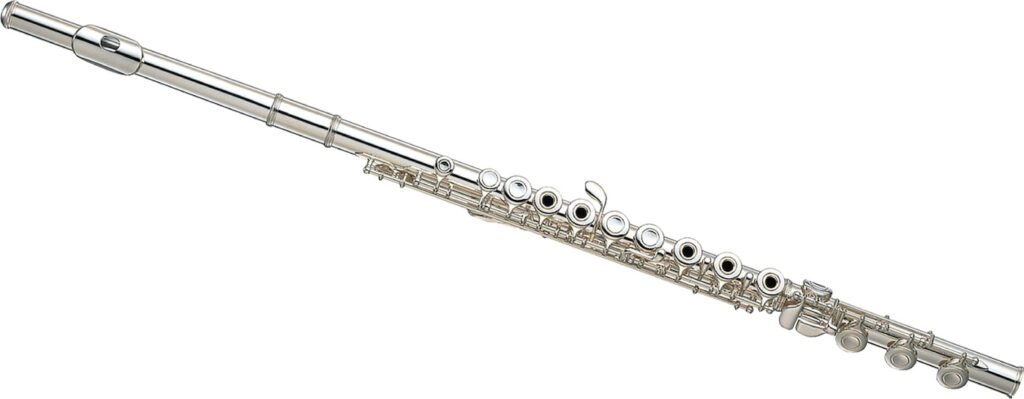
The concert flute is a side blown flute. The player will blow over an embouchure hole and use the many different keys to change the pitch.
The flute is in three separate parts, the head joint, the middle joint and the foot joint. The head joint is closed at one end, the left hand side.
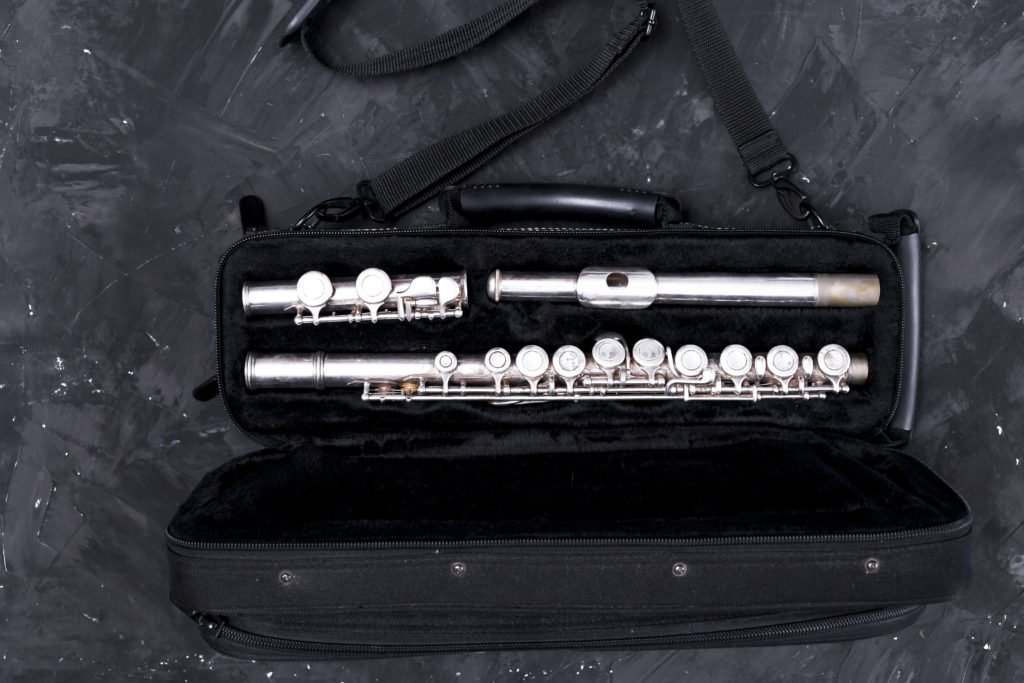
Plastic Flute – C flute
You may also see the western concert flute made out of plastic. The plastic flute is not usually made for professionals to play, but rather for beginners! Plastic flutes are much lighter than their metal counterparts and so make a great alternative for the young flutist.
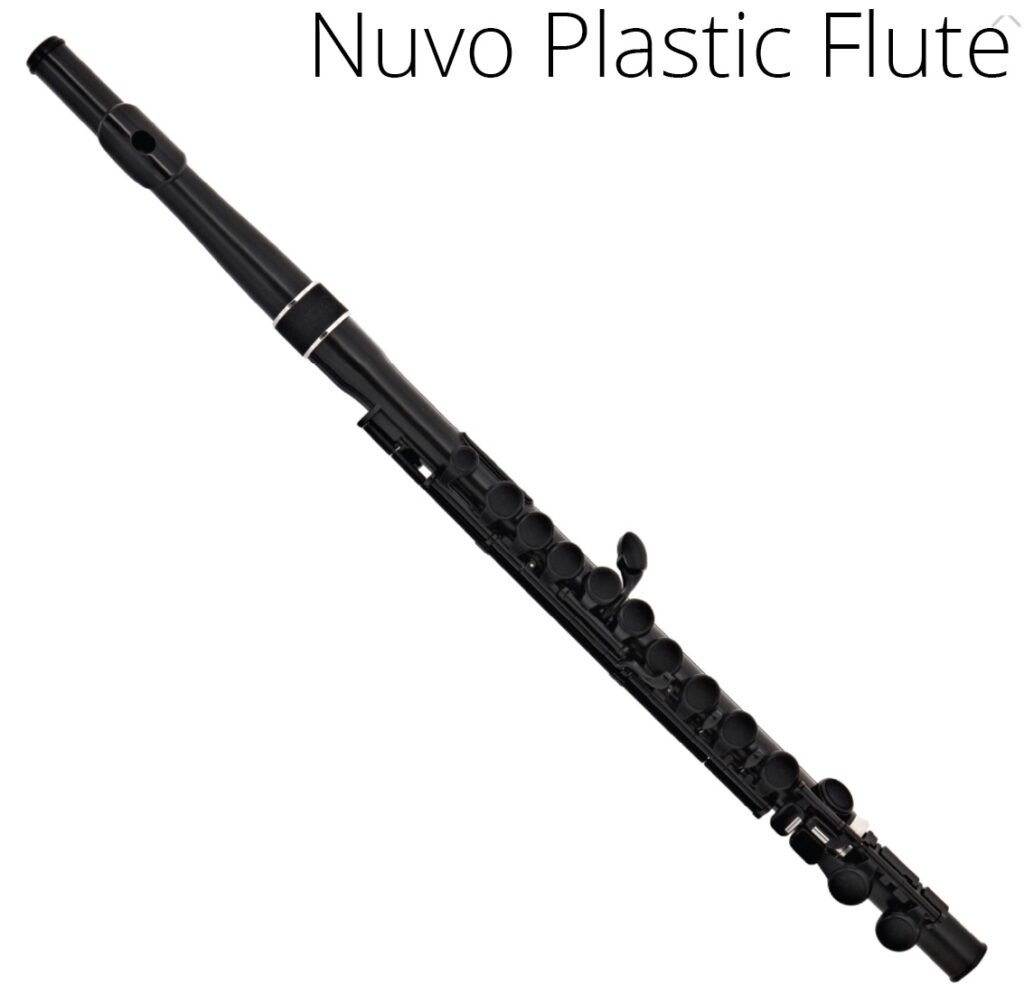
Piccolo Flute
The piccolo flute is possibly the next most common flute family member. Although it has existed back as far as the middle ages it was not established as an orchestral instrument until the baroque period.
The piccolo flute is approximately half the length of the standard concert flute but it has the same fingerings.
The piccolo is heard one octave higher than it is written on the staff, making it a type of transposing instrument. The piccolo plays notes that are very high and it tends to have a bright sound!
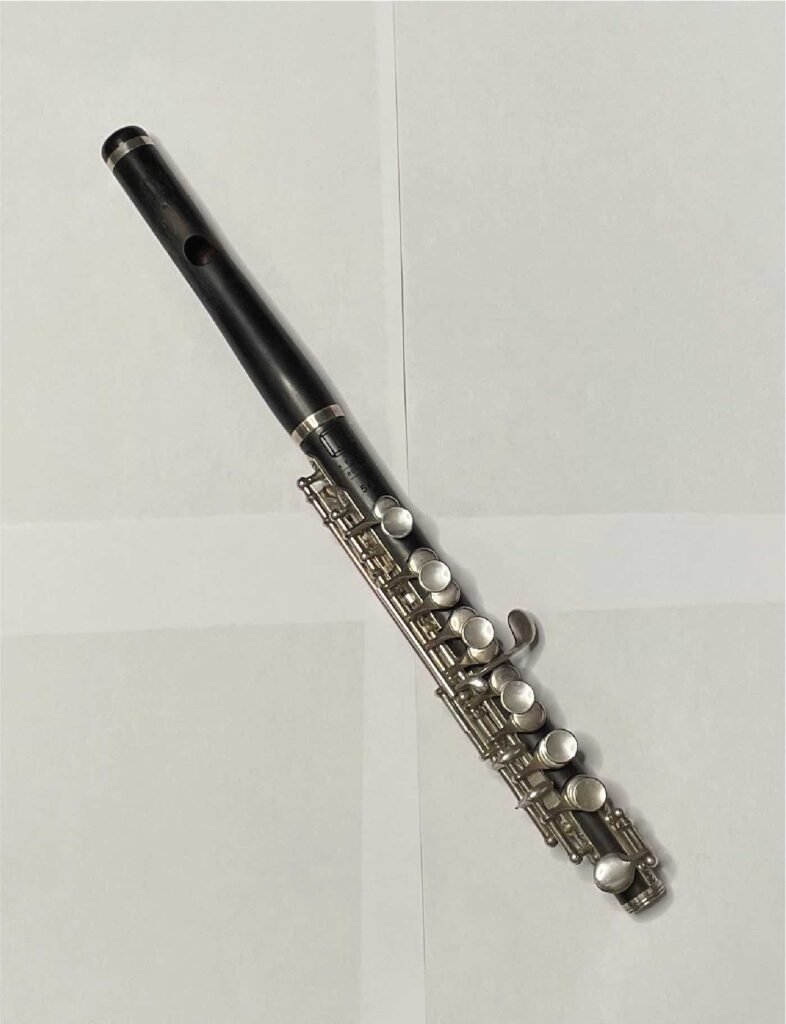
Due to it being the highest pitched flute you can hear it above all other instruments! So playing the piccolo is not for the faint hearted out there!
Unlike other members of the flute family that are most commonly made out of metal, piccolo flutes are usually made out of wood.

It is played in the same way as the concert flute, by blowing over the top of a small hole to create vibration in the hollow wooden tube.
The Alto Flute
This is the next largest instrument after the concert flute. It has a wider bore and is much larger, meaning that the pitch is much lower.
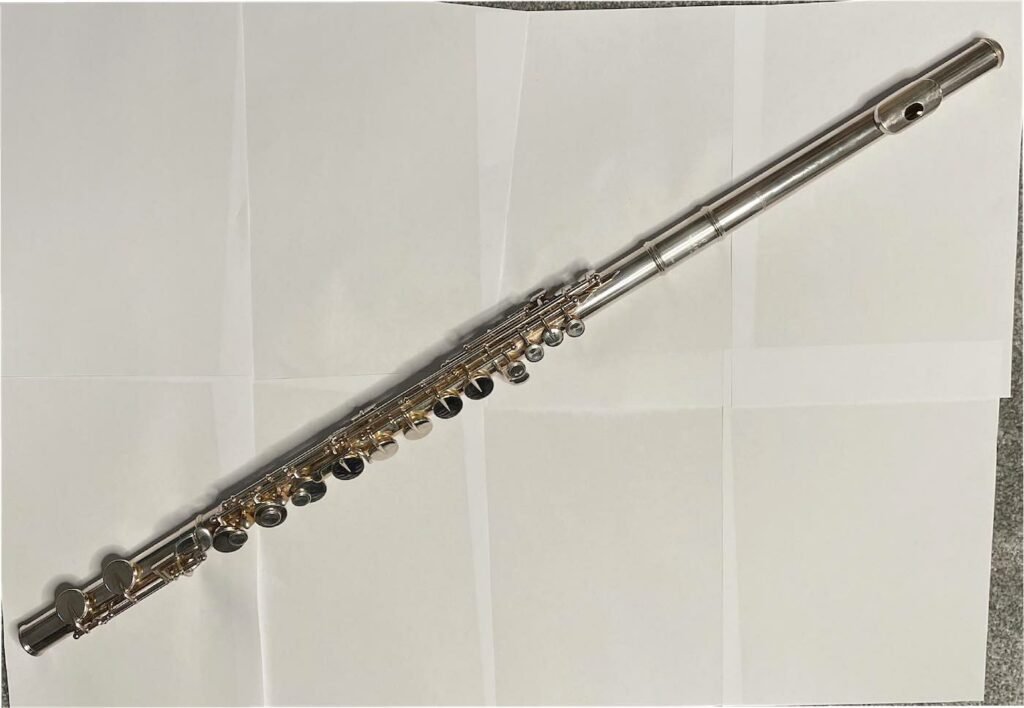
Alto flutes are transposing instruments in the key of G. This means that the alto flute sounds a perfect fourth lower that what is seen on the music. For example, if the alto flute sees a middle C on the staff, we will hear the G below.
The alto flute has a beautiful, mellow and rich sound.
We do not see this flute used much in early classical music but you do see it more within 20th century composers. Particularly in the works of Stravinsky and Ravel.
There is a beautiful alto flute solo in Ravel’s Daphnis and Chloe, from just before measure 188 until measure 189. This is a truly beautiful solo that really makes the most of the alto sound, if you get the chance to perform it!

Another great alto flute solo which takes advantage of the altos mellow tone is in Stravinsky’s Rite of Spring.
The Head joint on an alto flute can be curved or straight depending on the size of the player! The curved head will make the instrument slightly shorter.
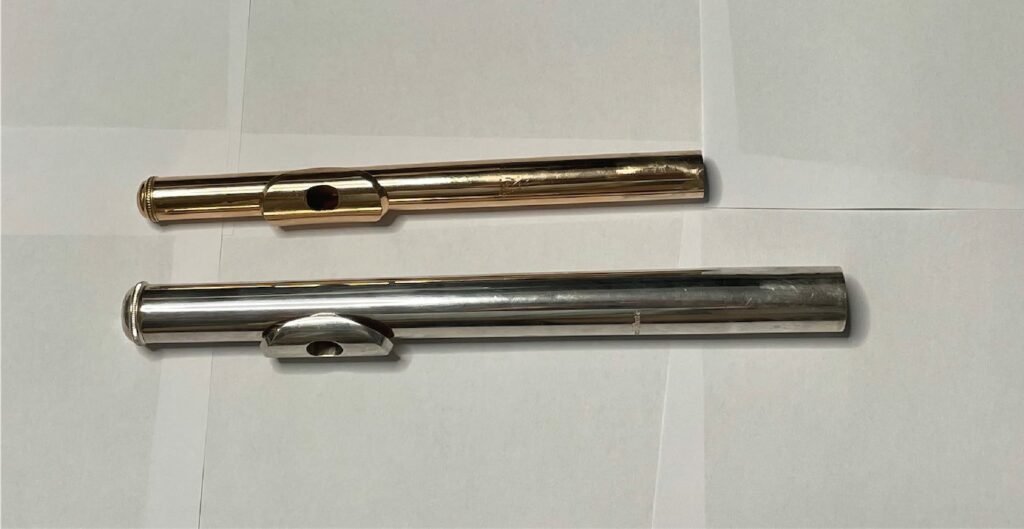
Bass flute
The bass flute is the next largest flute after the alto flute. This flute is in the key of C but sounds an octave lower than the concert flute.
It is much bigger in size than the other flutes we have seen and the bore is much wider than the other flutes above.
Another difference is that we only ever see the bass flute with a curved head joint at the top. This curved head is to facilitate ease of playing, if it was a straight head it would be too large to play!
You will rarely see bass flutes played in an orchestral setting as it is more often used in flute choirs and ensembles and it can add a beautiful depth to any ensemble.
This flute is 146cm long, making it extremely big!
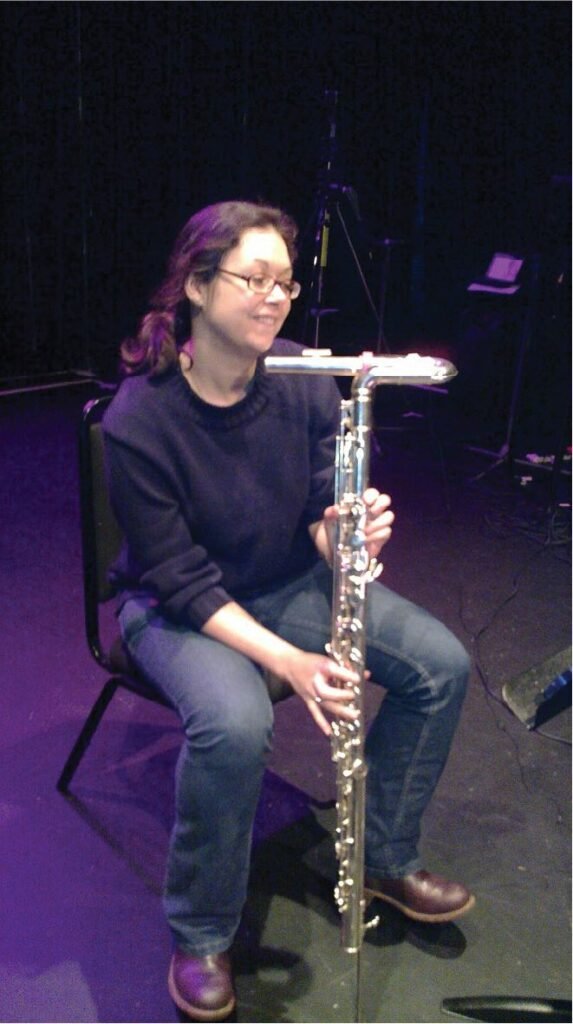
Low Flute Family
The Contrabass flute, Subcontrabass flute, and Double Contrabass Flutes
There are some more rare flutes which are actually lower in pitch than the bass flutes! Again, these are most commonly used in ensembles and flute choirs rather than orchestral music or solo performances.
These rarer flutes are the contrabass flute, subcontrabass flute and double contrabass flutes. These low flutes are much larger than any other flutes we have discussed!
The contrabass flute has 9 feet worth of tubing and is one whole octave lower than the bass flute, meaning that it is two octaves below concert flute!
There is a small post at the bottom of the foot joint on the contra bass flute which can be adjusted for comfortable playing.
In order to create a sound on this instrument you need to ensure that you have a wide low slow stream of breath. This is different to how you play the other types of flute!
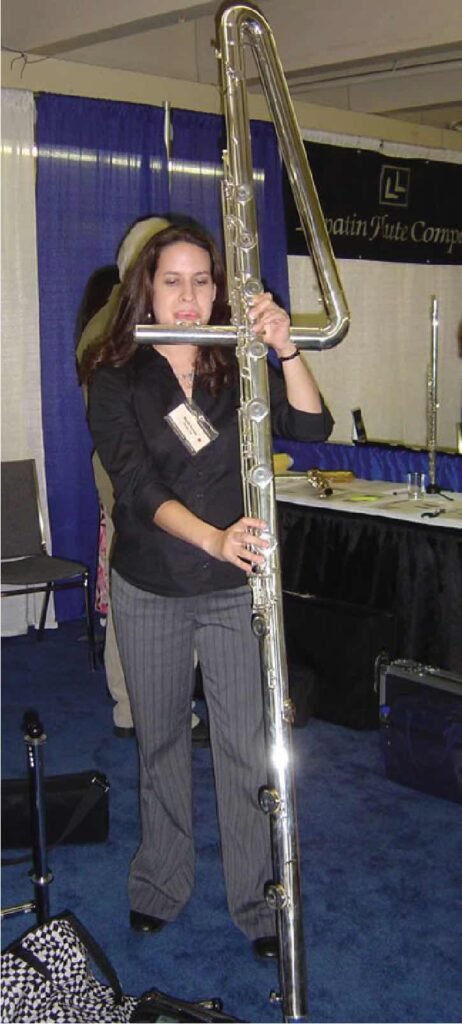
The subcontrabass flute has 15 feet (4.6m) of tubing. The subcontrabass flute is usually made in the key of G, which is a fourth below the contrabass flute in C and two octaves below the alto flute in G. Because of its key it can be known as the double contra alto flute.
It is possible to have a sub contrabass flute in C which is an octave below the contrabass flute.
This instrument is rarely used outside of flute ensembles and is only available by custom order with Eva Kingma or Kotato and Fukushima.
The subcontrabass flute is half an octave below the contrabass flute and two and a half octaves below the normal concert flute.
As with the contrabass flute it also has an adjustable post on the foot joint for ease of playing, meaning you can raise and lower the height of the instrument.
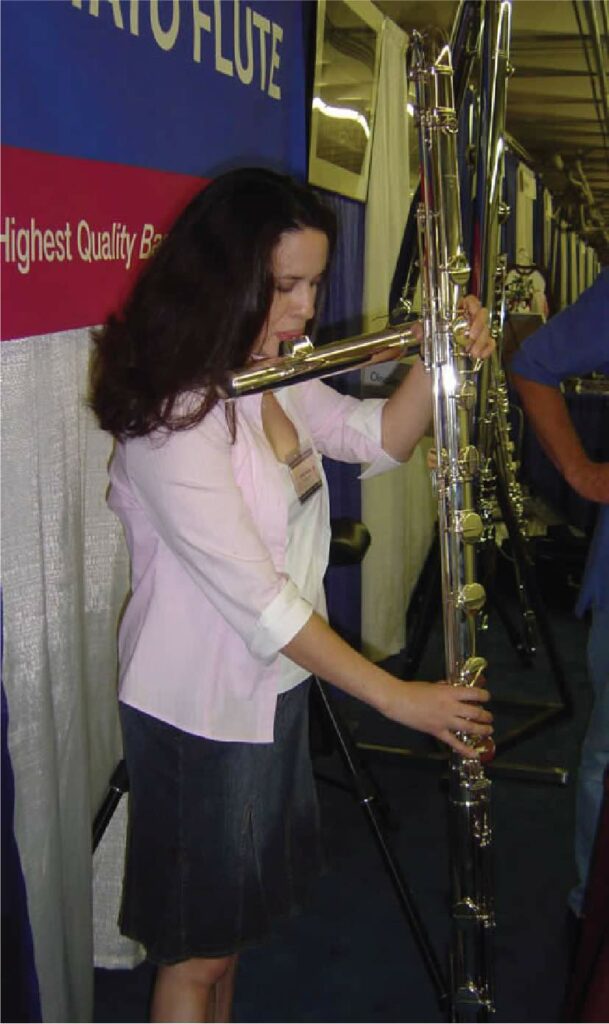
The Double contrabass flute is lower still and has 18 feet of tubing. This amount of tubing means that the double contrabass flute is over 8 feet tall. The double contrabass flute is one octave below the contrabass flute, two octaves below the bass flute and three octaves below the concert flute.
The lowest C on the doublecontrabass flute corresponds with the lowest C on an ordinary piano.
The doublecontrabass flute does not have an adjustable stand, so you may need to stand on a stool to play the doublecontrabass! The doublecontrabass is probably the easiest bass flute to play.
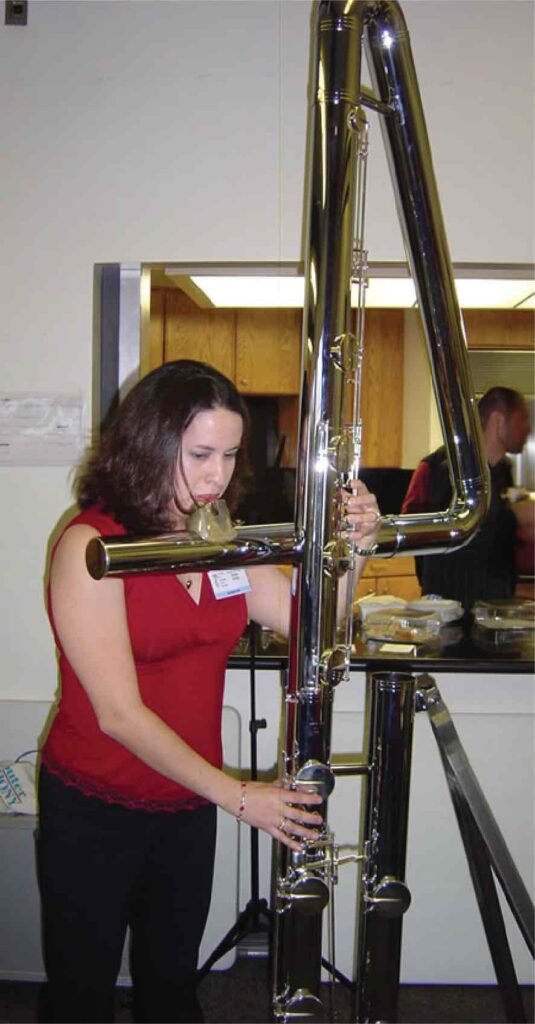
The hyper bass flute is another large low flute and is extremely rare. The hyper bass flute is twenty six feet in length.
This flute is pitched in C and is four octaves lower than the concert flute and one octave lower than the double contrabass flute.
The lowest note on the hyper flute is a C. This C falls under what is consider the average human hearing range! Needless to say.. it is very low!
All of the above flutes are incredibly expensive so if you plan to buy one then it is time to start saving!
Other Types of Flutes
The flutes we have seen above are all examples of western concert flutes. There are indeed many other types of flute out there which are less common.
Soprano flute
The soprano flute, otherwise known as the third flute is pitched in Eb. The eb soprano flute is a minor third above the concert flute and like the low flutes is very rare. The purpose of the soprano flute was to replace the Eb clarinet, particularly in the case of marching bands!
We sometimes see this flute referred to as the Eb soprano flute, the third flute or the tierce flute.
We rarely see this flute now but if you do it will most likely be in a flute choir!
Treble flute
The treble flute is seen most in Ireland and Scotland. You will occasionally see the treble flute in flute choirs and marching bands.
The treble flute is pitched in the key of G. It sounds a fifth higher than the written note on the sheet music.
The treble flute is similar to the piccolo and plays at a similar range. However, it does have a different quality in the upper registers to the piccolo and the lower range is far more extended.
Flute d’amour
The flute d’amour is literally translated as love flute! Again, this is a rare flute that is not often seen.
The flute d’amour is pitched in Ab, A or Bb. The register of this flute falls between the concert flute and the alto flute.
A great example of the flute d’amour in action is in Verdi’s opera Aida. In this opera Verdi uses three flute d’amour to enact the sacred Egyptian dance at the end of the first act.

Baroque flute
Another type of flute is the baroque flute. Baroque flutes are slightly more common than the other different types of flutes we have mentioned above. This is because it is the predecessor to the concert flute. However, unlike the concert flute, it sounds more like a recorder.
The baroque flute is a wooden flute. Wooden flutes have a more gentle sound than metal flutes. The embouchure hole is much smaller than on other flutes, this means a smaller sound than the standard c flute we play today.
The baroque flute has six finger holes rather than keys. This means that in order to achieve all the notes you will have to do lots of cross fingerings. On the modern flute (c flute), rather than having finger holes we actually have tone holes that are closed with a key on top. Tone holes are essentially openings on the body of the flute.
In the Baroque period, the flute was frequently confused with the recorder and so composers would usually label the baroque flute as ‘transverse flute’ within music to make it clear what the performer should play! In fact, the western flute we know today is also a transverse flute, we just don’t need to state that in our music.

End Blown flute/ Rim blown flute
The end blown flute or rim blown flute is a woodwind instrument played by directing your air stream against the sharp edge of the upper end of a tube.
This is different to the recorder as the recorder is aided by a fipple. End blown flutes are used a lot in folk music.

International flutes
There are also many flutes from around the world, below we will explore some of the most common. Most of these flutes are simple wooden flutes or bamboo flutes and have a very distinctive sound.
Bansuri flute and the Venu Flute
The bansuri flute is an Indian bamboo flute. This flute is very old and can be found in the regions of Nepal, India and Bangladesh. The most famous bansuri flute you will see is the North Indian bansuri flute. The flute has six finger holes.
This instrument is the flute that Krishna played.
Similar to the bansuri flute is the Venu flute which is an Indian bamboo flute as well. This flute is most commonly from Southern India.
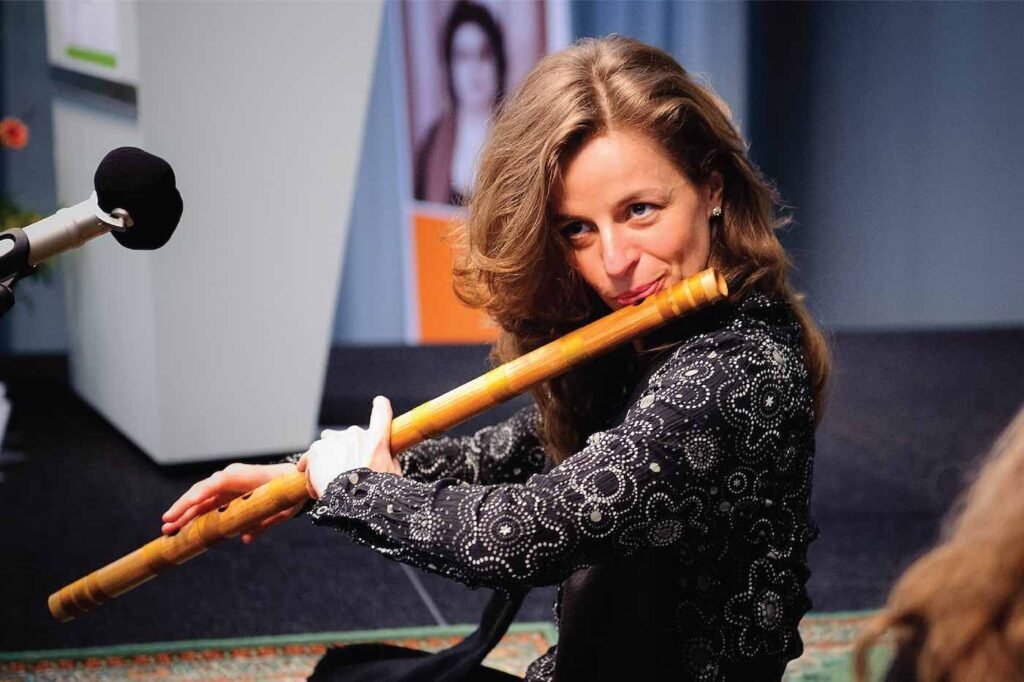
Dizi flute
The dizi flute is a Chinese flute. This flute is made of bamboo, similar to the Indian flutes. It has six finger holes and is thought to be over 9000 years old!

Shinbone flute
The shinbone flute is a japanese flute. There are actually two different types of the Japanese flute, Oyayashi and Uta. The difference between these two flutes is that they have different size finger holes. The sound they produce is very distinct.
Daegaum flute
The daegaum flute is a traditional Korean flute. It is fairly large and is made of bamboo.
What makes this flute a little bit different is that it uses a buzzing membrane giving this flute an unusual timbre.
Sodina flute
The sodina is another flute like woodwind instrument. It is usually made out of bamboo, a light wood, plastic or reed and the size of the instrument greatly varies in size depending on the region it is being played in. The sodina is considered a Madagascan instrument, however the origins do seem to come from Southeast Asia islands such as Indonesia, Malaysia and the Philippines.
We do still hear the sodina today and Rakoto Frah is considered the greatest sodina player in the 20th century.
Sring
The string flute is a shepherds flute originating from Eastern Albenia. This flute is commonly made of stork bone, bamboo, wood from an apricot tree or cane. The flute has eight finger holes which produce a diatonic scale.
Native American flutes
This flute is held in front of the player, like a recorder. It has open fingers holes and two chambers, one for the breath and one that creates the sound. The player breathes into one end of the flute without having to worry too much about forming the perfect embouchure.
There are a few different flutes that are called Native American flutes, including:
- Cheyenne
- Chippewa
- Dakotaand more
What is the most common type of flute?
We have looked at many different types of flutes but the most common flute you will see is actually the first type of flute we looked at. The concert flute is by far the most versatile out of all of these instruments making it a favourite among composers.
Wooden flutes simply do not have the power that the metal flute types have and so this is why you will see metal flutes more commonly used nowadays.
What’s next….?
- Get that perfect sound with our guide to intonation
- Improve your control with our guide to breathing for flute players.
